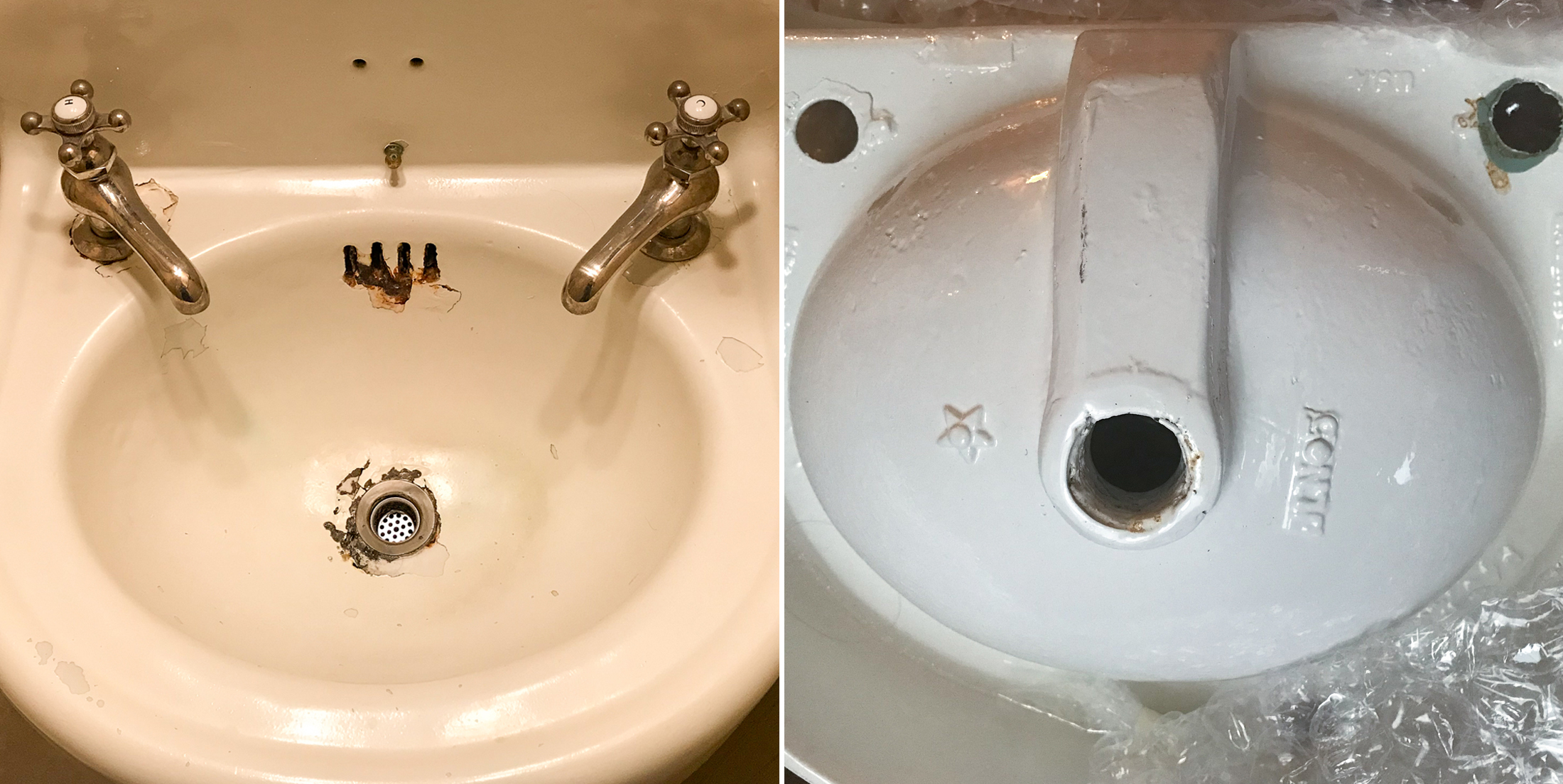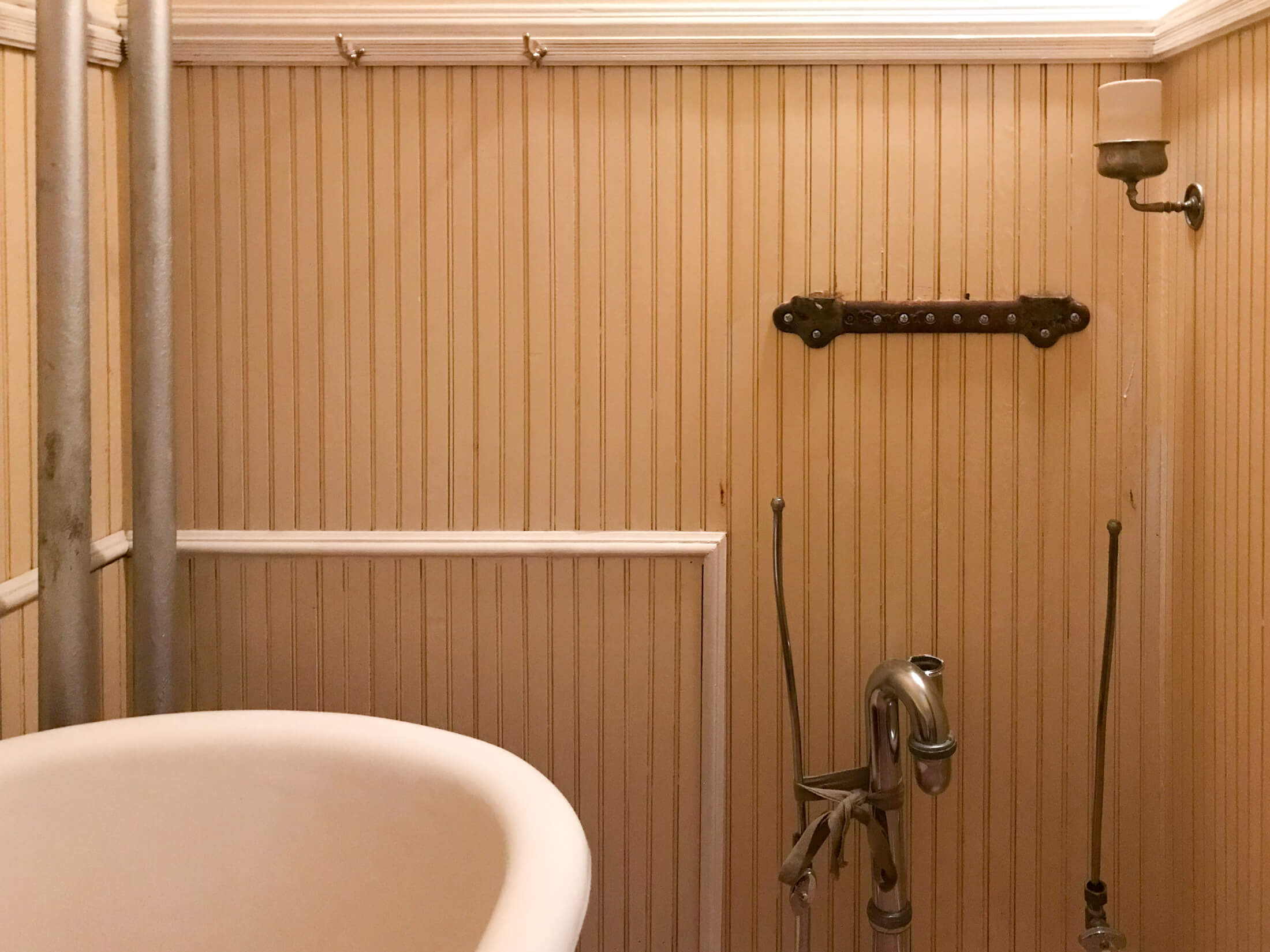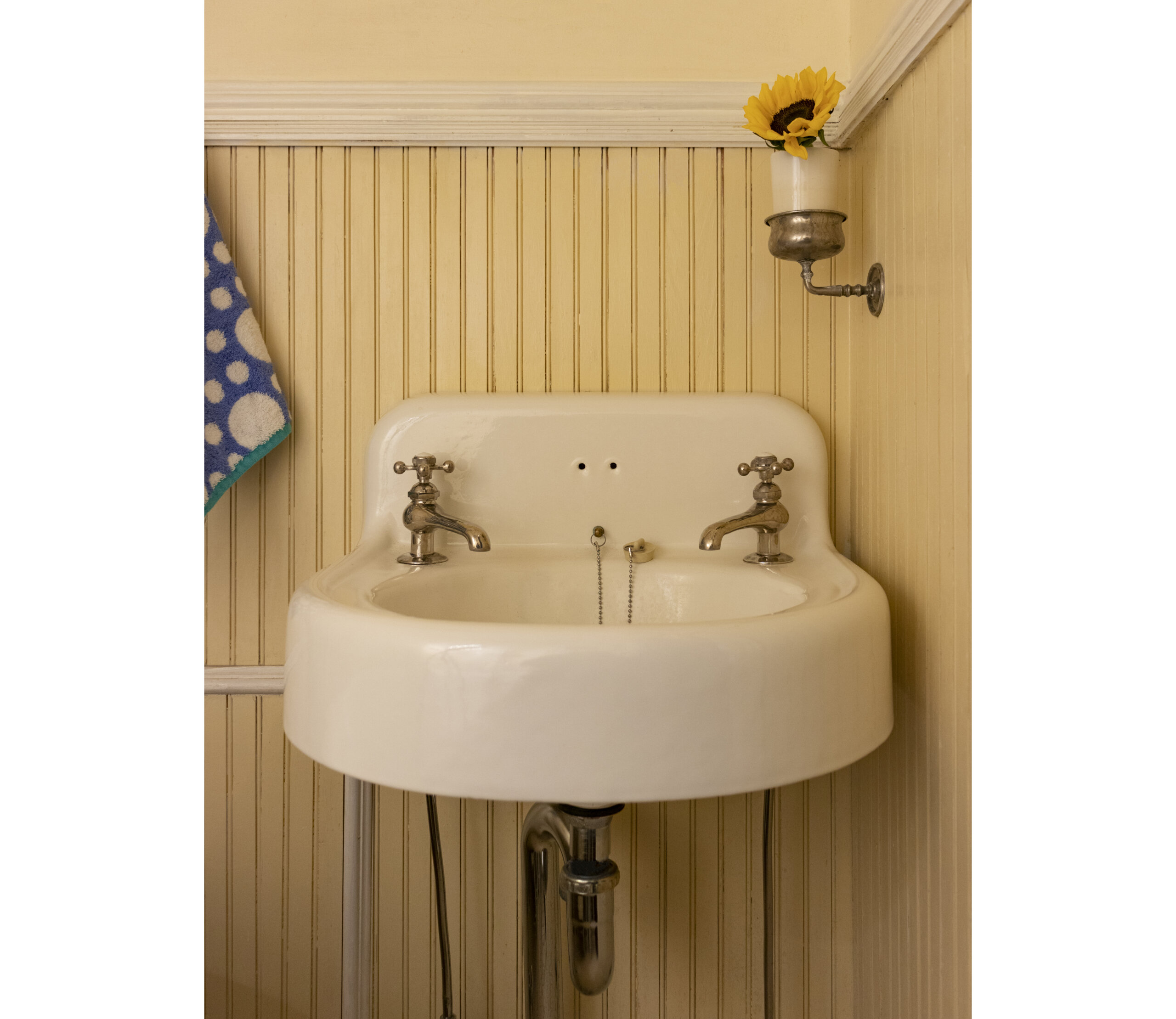What You Need to Know About Reglazing a Sink
Most bathrooms are more forgiving; if a fixture gives out, any number of salvage replacements or new sinks might work.

White fixtures stand out against green tile and pale apricot walls in a 1926 Crane Plumbing ad from Ladies Home Journal. Collection of Susan De Vries
Most bathrooms are more forgiving; if a fixture gives out, any number of salvage replacements or new sinks might work. That wasn’t the case in ours.
Our 1895 wood-frame Queen Anne row house, an original two-family, is remarkably intact. Among its features are the original kitchens and two tiny bathrooms, identical and stacked atop one another.
Each has bead-board wainscoting, molding framing a claw-foot tub, and an oval porcelain cast-iron wall-hung sink. By the time we arrived on the scene, the underside of one of the sinks was cracked and the sink was rusted around the drain and at the base of the hot-water faucet. We put some plumber’s putty on the crack, and it held, while we searched for replacement sinks.

Such sinks are common and were manufactured for decades with slight variations, but we never found any with the right measurements for our 4-by-6.5-foot bathrooms. Unlike the spacious bathrooms in one-family houses of the same era, there’s little room for improvising. Each fixture is curved and set apart an equal fraction from the others. Only a wall hung sink measuring 19 inches wide or less will fit in the space, and an oval basin is definitely preferable.
We refinished one of the sinks in situ – really just an application of paint – for $300. But there were issues around the drain and escutcheons, and the paint began peeling weeks later. In general, fixtures refinished in place have to be babied, the treatment isn’t hard-wearing enough for kitchen sinks, and it can leave a fixture looking worse than before.
More than a decade after we had moved in, both sinks were rusting through the overflow holes and needed to be replaced. Instead, we brought them to Porcelain Industries in West Islip, N.Y., on Long Island for reglazing.
First our plumbers removed both sinks and gently placed them on rosin paper in our kitchen. They removed all the hardware, which we saved in two plastic bags, one for each sink. Together, my husband and I were able to carry each sink to the car, and they fit in the back seat.

Porcelain Industries filled in the overflow holes so they wouldn’t continue to rust and destroy the sinks. Then they applied multiple coats of epoxy and polyesters on both the top and underside of each sink using infrared heat over about four weeks. The finish appears similar to the original glass porcelain enamel, which melts and fuses to metal at high temperatures. They can match any color fixture; we asked for the oldest, softest white to match the bathrooms’ original clawfoot tubs and newer Gerber toilets. The cost was $695 per sink.
When the sinks were ready, we picked them up and brought them back home for the plumbers to reinstall.
One thing we weren’t expecting and that is important to know in advance if you’re considering doing this: The process will alter the size of the drain and the pitch of the bowl around the drain.

The old PO (patented overflow) plug that sits in the drain hole and connects to the waste line no longer fit, nor did our plumber’s modern version. After trying several different places by phone and looking online without success, we went to New York Replacement Parts in Manhattan, where we had purchased faucets long ago. They said they didn’t have the part, but a place around the corner on 97th Street and Park called Central Plumbing might. It was near closing time, and the door was locked, but they kindly let us in. They had a part they thought would work, which we bought for $16. It was the Matco-Norca CP Brass two-piece PO plug with chain and stopper, Model FY-925, for a drain hole with a diameter of one inch and a quarter. A week later, the plumbers came to try it. Success.
No strainer will fit in the basket now; it is just a few millimeters too small. So instead, we use one of those flimsy one-size-fits-all mesh covers that sit on top of the drain. It keeps out errant toothpaste caps and magically helps the water drain. Without the cover, water pools and sits around the drain, which could eventually cause it to rust. The cover clogs easily but can be cleaned in a jiffy with a flatiron-shaped stiff-bristled plastic laundry brush from the dollar store.
We’ve been using the sinks for two years, and they look just like new – possibly even better.
Editor’s note: A version of this story appeared in the Spring/Summer 2023 issue of Brownstoner magazine.
Related Stories
- The Mythology of the Coffin Corner
- A Breath of Fresh Air: A Short History of the Sleeping Porch
- How to Get the Look: Victorian Bathroom Tile
Email tips@brownstoner.com with further comments, questions or tips. Follow Brownstoner on Twitter and Instagram, and like us on Facebook.





What's Your Take? Leave a Comment